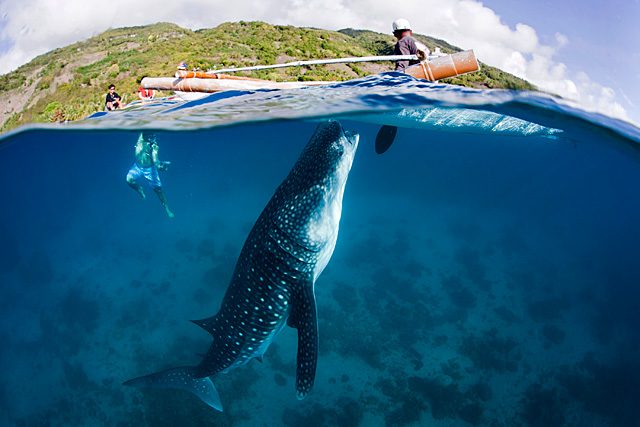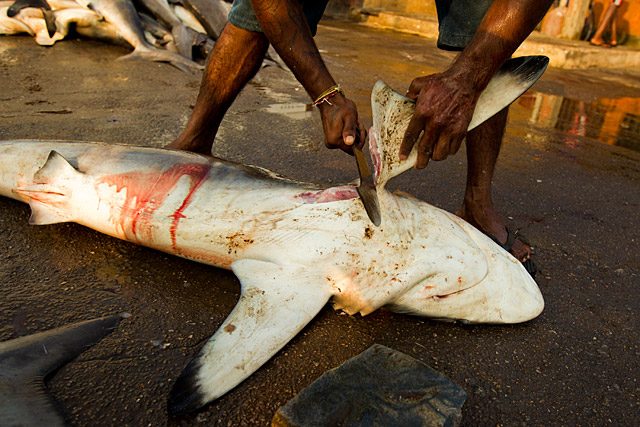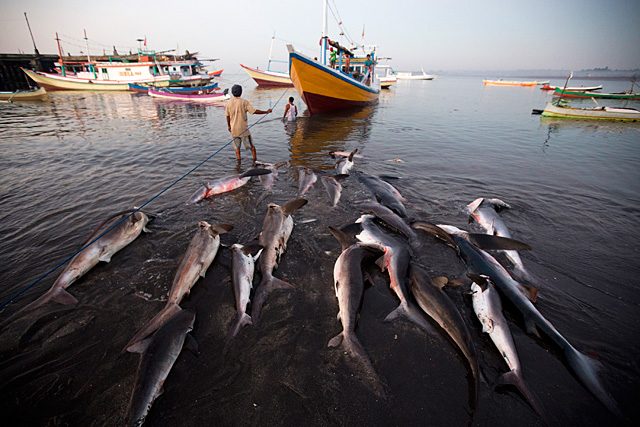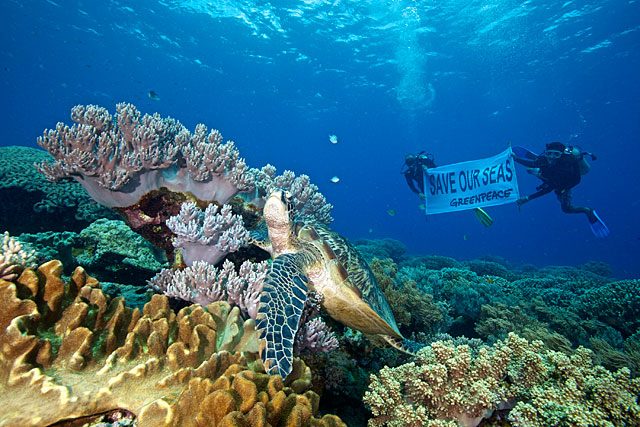SUMMARY
This is AI generated summarization, which may have errors. For context, always refer to the full article.

CEBU, Philippines – We have all seen or heard about it. It was the ultimate deterrent to enjoying a swim from the beach out to the open sea. Jaws.
Since that movie came out in 1975, a whole generation grew up looking at the open ocean with suspicion. You couldn’t literally hang your feet in the water without having a shiver down your spine at the thought of this great mouth – ringed with razor sharp teeth – shooting out from the depths to take a bite at you.
After nearly 40 years, we now know that sharks are not the mindless man-eating predator we once believed them to be. It is actually the other way around.

Sharks used to be quite plentiful when the oceans were still healthy and abundant. And they have been around for a really long time – in fact there are fossil records of sharks dating back to over 400 million years ago, much earlier than when the dinosaurs roamed the Earth.
Human civilization, on the other hand, has been around a few thousand years and yet we are on the verge of wiping out sharks from the face of the earth. In fact, you are considered extremely lucky to see a shark in the water and probably, have a better chance of seeing a UFO in this lifetime. Where have all the sharks gone?
Well, mainly to Asia where shark fin soup is as important in weddings, as diamond rings are to some cultures. Shark fins are valued at several hundred dollars per pound, making them very expensive but totally unnecessary food ingredients.

Sharks are one of the most endangered marine wildlife in the world right now. It is notoriously difficult to count the actual number of sharks killed for their fins (or for other purposes) every year, as a lot of this trade is illegal and some involve smuggling by organized crime. We do know, however, that there is a global trade of up to half a billion dollars in sharks, with estimates of up to 100 million sharks being caught every year. If this is true, then by the time you finish reading this article, nearly 2000 sharks would have been caught and killed.
You might think that it’s okay for these nearly perfect predators to disappear together with their sharp teeth. But being at the apex of the food chain means that they have an important role in keeping fish populations robust by preying on the weakest specimens. Any disruption on this balance would create a cascading effect down the line.
Saving the endangered predator
Compared to other marine species, sharks give birth to relatively fewer offsprings. Combined with their slow growth, these make them vulnerable to overexploitation. From being the top and fearless predator in the oceans, they are now being hunted by humans to extinction. Many seas and oceans are now stripped off of sharks.
There are some efforts to try and reverse this trend. International treaties like the Convention on the International Trade in Endangered Species (CITES) have voted to ban the trade of some of the most threatened sharks, such as several hammerhead species. There are also several shark sanctuaries around the world.

Just last year, a campaign by Greenpeace and other partner groups collectively called Save Sharks Network Philippines, lobbied to different international airlines to ban the transport of shark fins and products. The combined effort of severaI like-minded groups has successfully convinced at least 20 airlines, including our very own Philippine Airlines and Cebu Pacific, to commit and help preserve sharks. Hopefully, in the near future, you won’t have to share your flight with shark fins bound for a soup bowl.
But are these enough? No. They are still being needlessly caught in huge numbers by longline fishing fleets for tuna. Areas where sharks are becoming locally extinct are still increasing. Sharks are still fast disappearing and we only have ourselves to blame.
So what’s more scary than an ocean full of sharks? An ocean without them.

– Rappler.com
Greenpeace and other stakeholders will hold a series of events to highlight Shark Week. A photo exhibit entitled Spotlight on Sharks (S.O.S.) will be unveiled on Sunday, August 10, at the Level 1 Expansion of Ayala Center Cebu. It will run for 6 days.
On August 14 and 15, marine conservation groups and stakeholders will also converge at the first ever Philippine Shark Summit, hosted by the Cebu Provincial Government.
Mark Dia is the Regional Oceans Campaigner for Greenpeace Southeast Asia. He may be reached through mark.dia@greenpeace.org.
Add a comment
How does this make you feel?
There are no comments yet. Add your comment to start the conversation.